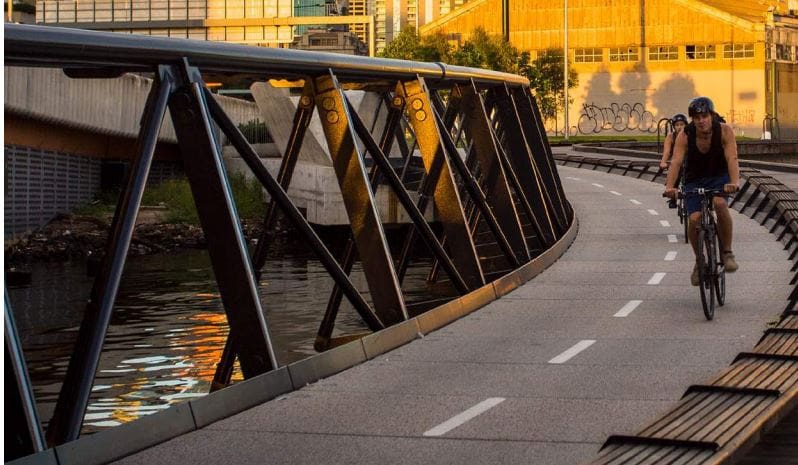City of Melbourne Commits $16 million for First Stage of Cycleway Upgrades

Hundreds of car parking spaces will be removed across Melbourne’s CBD over the next two years to make way for 40 kilometres of bicycle lanes being fast-tracked across the city.
The measures follow large increases in the number of people cycling into the city centre during the COVID-19 pandemic – with some bike routes recording more than 300 per cent more use – and are designed to cater for changing work practices in coming months and years.
The City of Melbourne has looked to cities such as London, Paris and Milan, which have created safe cycling routes to encourage more people to leave their cars at home.
Lord mayor Sally Capp said a key element of the council’s approach was the desire to create bicycle lanes that people felt comfortable riding on.
“Our research shows that it’s essential to create physical protection from motor vehicles to encourage more people to ride in the central city,” she said.
Exhibition Street, between Flinders and Bourke streets, and Rathdowne Street, between Victoria and Faraday streets, will be the first to be upgraded.
They will be followed by William Street (Dudley Street to Flinders Street), Abbotsford Street (Flemington Road to Queensberry Street) and Swanston Street (Grattan Street to Cemetery Road).
“These priority routes will better connect suburbs like Carlton, East Melbourne, North Melbourne, Brunswick and West Melbourne to the central city,” Cr Capp said.
Transport portfolio chair Nicolas Frances Gilley said the Exhibition Street and Rathdowne Street lanes would be protected for 3.5 kilometres.
“This is one of the most important routes for cycling to the city from the north, but is currently unsafe, with sections of the street having no protected bike lanes,” Cr Frances Gilley said.
A Bicycle Network count of 8800 riders on April 25 showed the number of cyclists had increased by 270 per cent compared with November last year.
The lanes will be upgraded in two stages, with the first 20 kilometres delivered in 2020-21 at a cost of $16 million.
Cr Gilley said the lanes would be installed as quickly as possible.
“We will use plastics, rubber and recycled materials that can be installed quickly so we can accelerate bike lane delivery. The infrastructure we install will be functional for years to come and can be progressively replaced with fixed lanes over time as required.”
A longer version of this article was first published in The Age.
